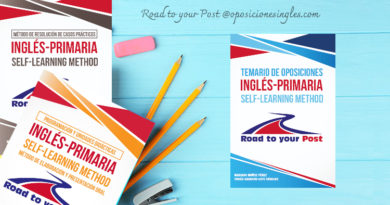INSPIRATIONAL TEACHING PRACTICE: TEACHING ENGLISH AND MUSIC.
Everyone would admit that music and rhythm are forms of cultural expression in all cultures and in all ages. As Read (2007) notes, children love rhythm, music and movement; and songs contribute to learners´ overall social, linguistic, cognitive and emotional development. In this sense, when children start learning a FL, songs, rhymes and chants play a special role in providing them with authentic and enjoyable input.
The main cognitive reason for using songs in the classroom is automaticity. Songs present opportunities for developing automaticity. Gatbonton and Segalowitz (1988) define automaticity as “a component of language fluency which involves both knowing what to say and producing language rapidly without pauses”. Songs are a method that can help automatise the language development process. Traditionally, it was thought that automatisation would be produced through repetitive exercises in a noncommunicative environment. Gatbonton and Segalowitz also note that that we must “place students in an environment in which it is appropriate to use utterances in a genuinely communicative fashion».
Goodwin (2001) points out that songs, chants and rhymes can provide strong patterns of stress and intonation that may help students grasp the sounds and the rhythm of English. These resources have the advantage of providing motivation and present the sounds in meaningful contexts. Similarly, through songs and rhymes students can be aware of connected speech. In this sense, a useful way to teach children how stress beats occur at equals intervals of time is to ask them to clap the strong beats in a song or a rhyme. This can also enhance understanding, since important “content” words tend to be stressed.
Another relevant theory on the grounds of the use of songs in the FL class is Krashen´s affective filter. In Krashen´s view, the students´ positive attitude is essential for effective learning; therefore, teachers should strive for the creation of a positive, pleasant and anxious-free environment in which learners feel relaxed. In this light, the use of songs has stood the test of time in FLT because of their potential to motivate and create willingness to understand and use the FL.
The rapid world of new technologies has aroused new forms of communication, knowledge and entertainment, to tell just a few fields. One of them has to do with the power of social media amongst students and their influence in shaping our students likes and spreading trends.
The proposal by Stéven Huitorel, secondary school teacher and singer-songwriter from Brittany, surprises due to its simplicity and at the same time effectiveness. Basically, it consists of taking advantage of those “viral trends” so popular amongst students to turn them into challenges.
In this case, inspired by Anna Kendrick in the film Pitch Perfect, which had started off an endless list of “Cup Songs” on YouTube, he decided to set up his own project involving all children in the same age (14 year-olds). Under the principle that the language, especially in what refers to the essence of connected speech, is much easier to grasp if joined to music or movement, he started off. The video shows the brilliant result of the effort and rehearsal. We hope you enjoy it.
Bibliography
- Gatbonton, E. & Segalowitz, N. (1988). “Creative automatization: Principles for promoting fluency within a communicative framework”. Tesol Quartely, 22, 473-492.
- Goodwin, J. “Teaching Pronunciation”. In Celce-Murcia (ed.) “Teaching English as a Second or Foreign Language. Heinle and Heinle. 2001.
video by
Entmon Ejan




